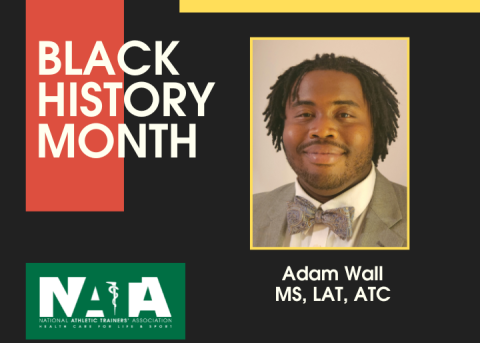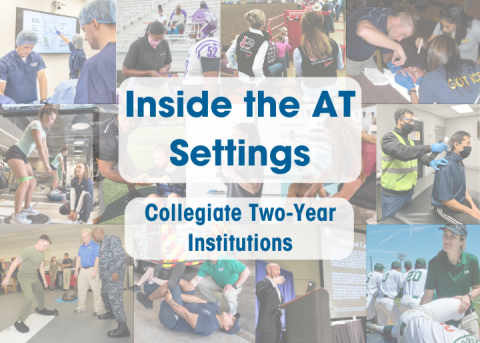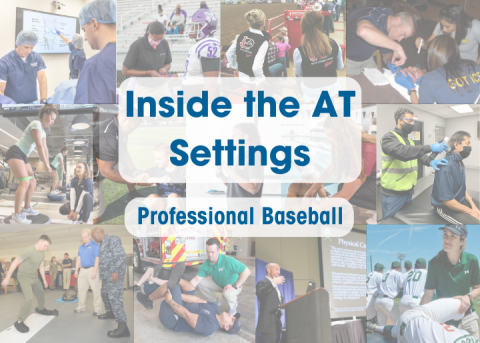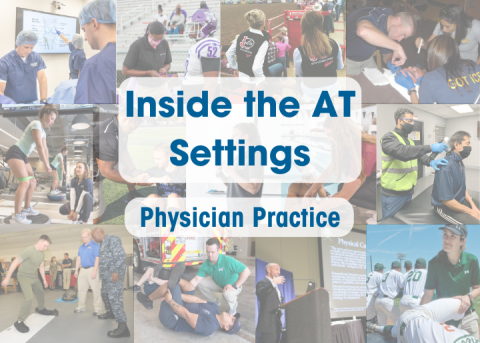
In honor of Black History Month in February, NATA Now is highlighting some of our Black leaders at the state, district and national levels as they share insight into their volunteer journeys.
“It was the perfect marriage of sports and human anatomy and physiology,” NATA volunteer leader Adam Wall III, MS, LAT, ATC, said about his decision to become an athletic trainer. “I was fortunate enough to have a high school AT who introduced the profession to me and allowed me to shadow and observe what a normal day is like for an athletic trainer in the secondary school setting.”
Wall said during this mentorship period, he started to fall in love with the unique facets of athletic training such as how it combines sports and health care in the secondary school setting.
Having committed himself to the profession, the NATA Secondary School Athletic Trainers’ Committee member and Mid-Atlantic Athletic Trainers' Association Secondary Schools Committee chair shares his professional development and the value of leadership.
What was your first volunteer position within the athletic training profession and why did you get involved?
My first volunteer position within athletic training was while I was an undergraduate student at East Carolina University. I was a North Carolina student senator for MAATA. Katie Flanagan, EdD, LAT, ATC, my former program director at East Carolina University, always encouraged me as a student to get involved with the professional organizations of athletic training. She emphasized the need for future and current ATs to help with the advancement of the profession through service.
Tell us about your current position as MAATA Secondary Schools Committee chair and what you hope to accomplish in this role.
My current position as district chair entails advocating for and creating resources for ATs in the secondary school setting in District Three. This setting employs a large percentage of athletic trainers across the country and is often undervalued and/or not adequately funded. I hope to enlighten people about the effects that having a quality athletic trainer can have on our middle- and high-school-aged student athletes. I want to help share the success stories and celebrate the hard work of this population of athletic trainers.
Why is representation in leadership important and how does it impact the profession?
Representation in leadership is important because every young child should be able to see people who look like them in leadership positions, regardless of the profession. Having representation helps diversify the profile of future candidates and allows for a diverse field of health care professionals.
How has volunteering helped you grow personally and professionally?
Volunteering has helped me create quality relationships with likeminded individuals over the years. I have met a lot of awesome athletic trainers by volunteering and learned a variety of life lessons by just listening to their gems of experience. Sometimes, the best life lessons come from those with experience and knowledge.
What’s your fondest memory of serving so far?
Being able to be a part of the planning and execution of some awesome experiences for students and athletic trainers over the years.
What advice do you have for other athletic trainers who want to give back to the profession?
Find a level and role that best fits your schedule and dive in headfirst. Sometimes, we get in our own way and don’t volunteer due to fear and/or anxiety. There is a large need for volunteers at the state, district and national levels. Find something you’re passionate about within the profession and start giving back your time.





